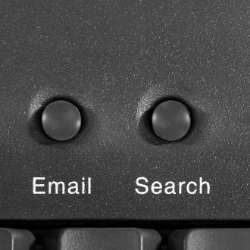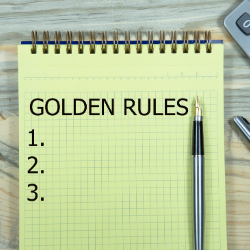I admitted that it is easier for me to love emails because I use AEC email management software to help. So, let’s look at this in a bit more detail…
Why I Love Emails

As we touched on previously, one of the main reasons people dislike emails is because it’s too hard or time-consuming to organise their messages and file them to a sensible place. I explained that we can make this easier by filing sent or incoming emails to the most logical place, which is of course easier said than done if these locations are not already set up.
The AEC email management software I use suggests where to file the message based on the content of the message and my past filing activities, so this is both easy and immediate. The key though is that the messages are filed to a place that is accessible to colleagues and the place is relevant to the message. For example, project related messages are filed to project folders whereas marketing messages are filed into business development folders.
If I or a colleague is on holiday or leaves the business, others don’t have to search our personal inboxes as the messages are in shared locations.
This not only ensures that everything to do with a project is in one place, but additionally makes everyone’s lives easier and provides the business with risk protection as important exchanges are in the right place and can be located in seconds; no need to mount old Personal Storage Tables (PSTs) or restore a past leaver’s mail from backup.
Unlike the messages stored in external systems like collaboration sites, they can’t be lost or turned off by a third party.
Strange Behaviours That Are Oddly Better
 The AEC email management software is so much easier and faster to use than Windows Explorer that you can find yourself using it in ways you may not have anticipated. For example if I’m looking for a quote that was sent to a customer, I will typically search for the attachment in the customer’s messages, firstly because it’s faster than any other method and secondly because I can be sure that I am looking at the one that was actually sent and not a draft that has yet to go out. So in a weird way, it can be a simplistic document management system.
The AEC email management software is so much easier and faster to use than Windows Explorer that you can find yourself using it in ways you may not have anticipated. For example if I’m looking for a quote that was sent to a customer, I will typically search for the attachment in the customer’s messages, firstly because it’s faster than any other method and secondly because I can be sure that I am looking at the one that was actually sent and not a draft that has yet to go out. So in a weird way, it can be a simplistic document management system.
Another odd behaviour is when I’m trying to find a folder perhaps to locate a file in it. Ordinarily I would have to remember which server or mounted drive to explore and then which of the myriad to sub-folders to navigate through; it’s slow, error prone and hence frustrating. So, I use the AEC email management software’s search to find the customer’s messages, which is lightning fast, then I right-click a message and select "explore location" and I’m there.
I also have the memory of a goldfish, so the ability to search my emails really quickly augments my poor brain and gives me the peace of mind that when I can’t recall the details, I can lay my hands on the facts in an instant.
What do we need to change?
As we mentioned, human behaviour is the biggest problem. Whilst there is an implicit etiquette in using a telephone, we have failed to establish an equivalent in email communications. Phone calls also have the benefit that you can gauge the context and emotion from the tone of the caller, whereas emails can easily be misinterpreted. We are also more guarded and polite in our phone conversations and will include pleasantries that we rarely slip into email conversations, so we are typically more unintentionally blunt and business-like in our email communications.
Follow the Golden Steps
You can’t change other people, you can only change yourself in the hope that others will follow your lead, so set a good example. Pick up the phone or better still communicate in the sequence below and only move to the next method when the one before it is not available or not appropriate.
The Golden Steps:
- Face to face
- Phone
- Email
- Be polite and use language that conveys your mood/feeling so that you don’t come across a brusque or rude
- Don’t use distribution lists unless EVERYONE on the list HAS to see your message
- If an email thread does not need to include certain people, remove them from the thread
- Don’t write long emails
- If you are writing in the evening or weekend, considering using delayed sending so that it’s sent on Monday morning

NOTE: I would recommend that you follow important verbal communications with a short note via email confirming what has been discussed and agreed. It’s helpful to both parties, provides indisputable evidence and in my case compensates for my dying brain cells.
Email is just a tool
Email is just a tool and just as you can do some pretty nasty things with a chisel, you can also create beautiful things. It happens to be a wonderfully long lasting, reliable and simple tool which works incredibly well. Use it sensibly and it will be your friend and protect you from risks. Treat it badly and you will have good reason to hate it.
So, follow the golden steps and take a look at our AEC email management software to help you on your love journey with emails.

Author
Symetri





